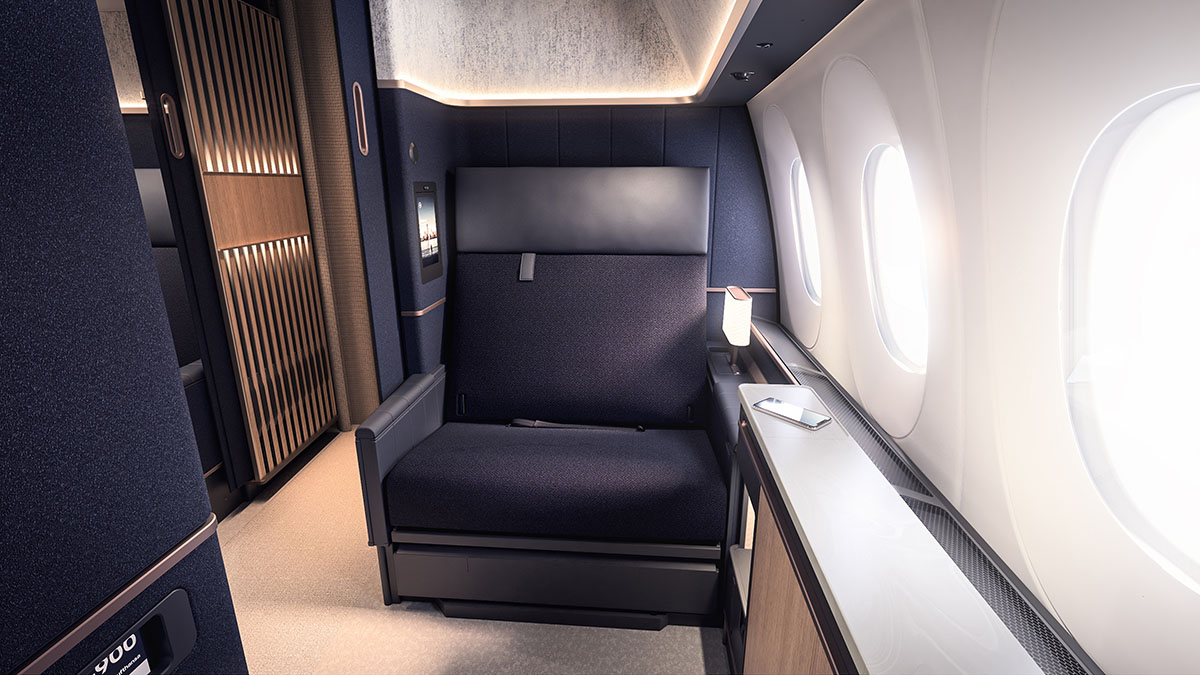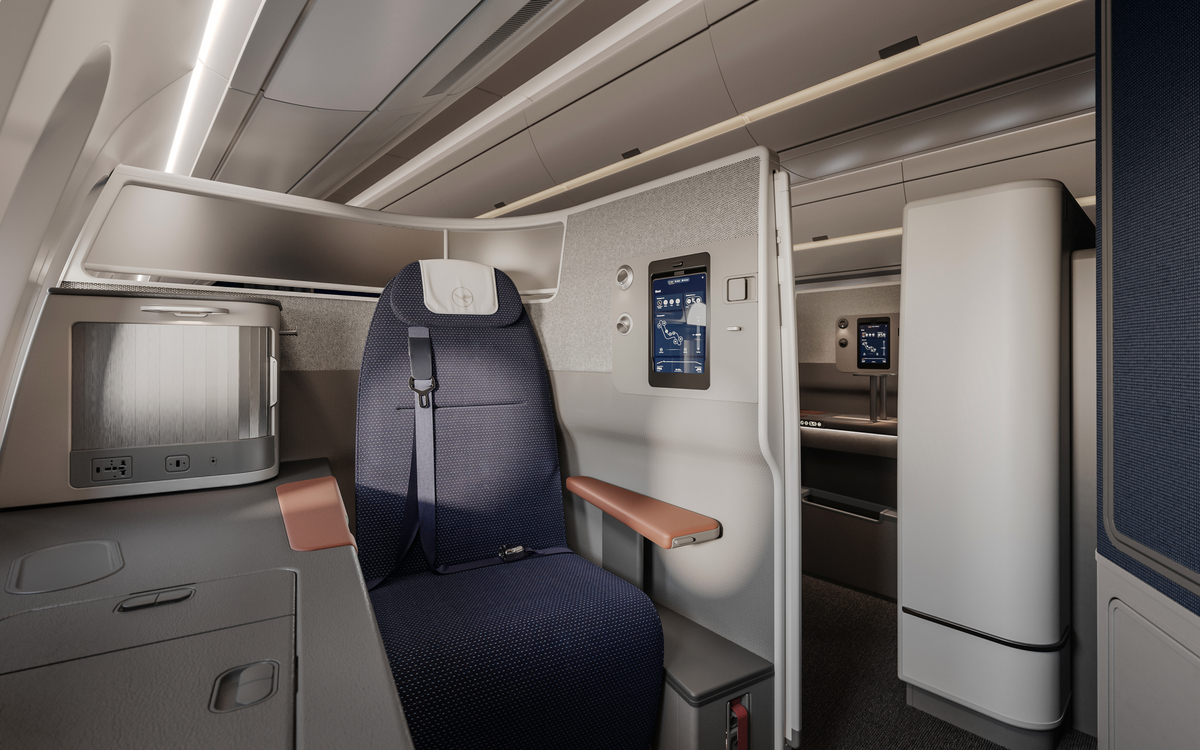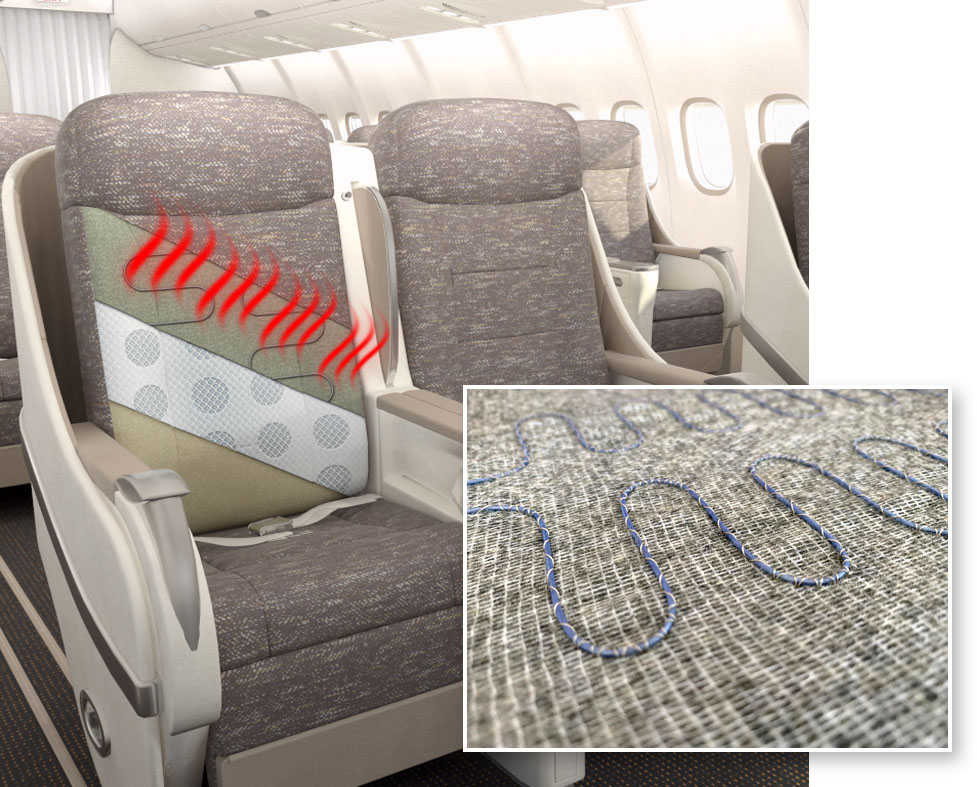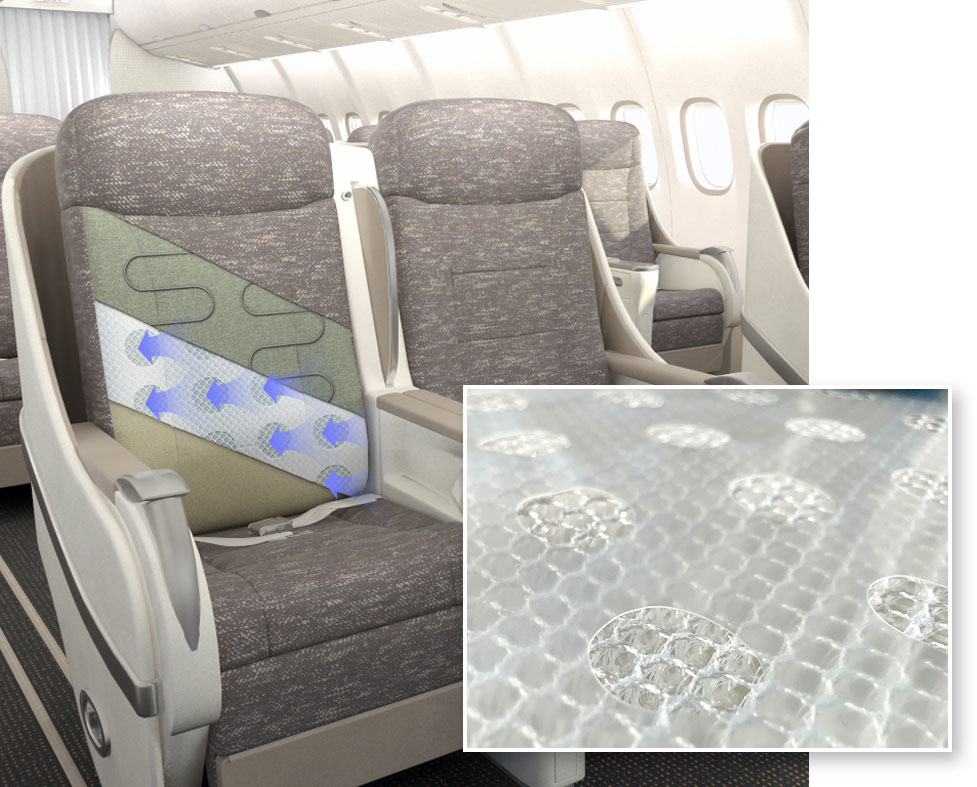How Lufthansa became the first airline to introduce heated and cooled seats onboard
Links on Head for Points may support the site by paying a commission. See here for all partner links.
Heated seats are nothing new as anyone who has driven a luxury car can attest. Even the Smart Car offers heated seats as an option.
In fact, heated seats have been a thing in the automobile world since 1966 when General Motors debuted the technology on the Cadillac Fleetwood. Since then, they’ve become standard across high-end vehicles, warming bums on cool Autumn days or frosty Winter mornings.
And, as anyone who has tried them can attest, it’s a very pleasant experience: a far deeper warmth than can be achieved by blowing hot air around the cabin.
So why has it taken until 2023 to see this technology on an aircraft?
The first airline with heated seats
Last month, Lufthansa unveiled its next-generation aircraft seating, which it is calling Allegris. In the cavernous halls of a former power station at an in-person event in Berlin, I was able to see and sit in brand-new seats, including a new First Class suite and business class cabin. You can read my article about Lufthansa Allegris here.
Whilst the honeymoon suite in first class understandably received the most attention, Lufthansa also announced it was adding in-seat heating and cooling for all First Class and business class passengers – an airline first.
In his keynote speech, Jens Ritter, CEO of Lufthansa, said:
“Nothing is as individual as the personal temperature perception.In the future, our premium class passengers will be able to select their own personal microclimate. Some passengers feel too warm; other passengers prefer cooler temperatures whilst dining or warm temperatures whilst sleeping or vice versa. No problem, our new seats can be warmed or cooled by the individual passenger.”
To achieve this first for passenger comfort, Lufthansa partnered with Swiss-based Caynova to become the launch customer for these features. Caynova already supplied the airline with pneumatic seats for its premium cabins.
According to Cesar Uparela, Chief Commercial Officer of Caynova, the company had been developing in-seat heating and cooling features in parallel to Lufthansa’s research and design for the new Allegris seats:
“We acquired heating and cooling IP and licenses for the aviation sector from Gentherm Corp, one of the biggest seat heating and cooling supplier in the automotive world. We wanted to expand our seat comfort feature portfolio with thermals, because we saw a large potential for the product.”
Adapting automotive technology wasn’t just a plug-and-play solution. As anyone who has ever worked in aviation will know, it’s a miracle that anything gets certified for use on aircraft.
The stringent regulatory requirements are one of the reasons it often takes so long to get new technology on board – and why we’re only now seeing Bluetooth connectivity become standard on aircraft.
“There were many challenges we had to face to bring the technology into an aircraft. The two main ones were certification of components (especially heating) and reliability.
To put this into perspective, components for car seats are designed for an average use of 2 hours per day. The usage of seat heating and cooling components on a widebody aircraft is higher by a factor of 10! Therefore a business class seat is occupied for, on average, 20 hours per day. In addition handling and usage of the features is a lot rougher than in a personal vehicle, since the passengers don’t own the seat.”
According to Kai Peters, Senior Director of Customer Experience Design at Lufthansa, “the life span for a cabin is between 8-12 years.”
How do Lufthansa’s heated seats work?
Heating a seat is a relatively simple and well understood process, and these days you’ll find all heated products – from heated seats in cars to electric blankets – rely on the same technology.
Caynova’s technology is no different, and uses a resistive heating wire provide conductive heat. This is the same technology you can find in your toaster at home. As Cesar Uparela explains:
“A resistive wire turns electrical energy into heat. By using a control circuit, this happens in a safe and controlled manner, with just enough electrical current supplied to achieve the passenger’s selected temperature.
In order to prevent any fire hazard, the resistive wire is stitched into fire-resistant blocker material within the seat foam, which also helps to create an even distribution of heat throughout the seat. The system includes fail safe measures in order to prevent harm to a passenger or the seat in case of system malfunction.”
When all is said and done, the resistive wire should be imperceptible. Your seat should warm up as if by magic. Having tried it on the Allegris First Class Suite mockup, I can confirm the technology is very responsive and comfortable.
Not just heating, but cooling too
Even more impressive is that Lufthansa is introducing in-seat cooling as well. This is a more difficult problem to solve as you can’t just insert a cooling cable, but Caynova was able to develop a pleasingly simple solution by harnessing the power of the air around you.
In this case, the cooling effect is achieved through the use of a fan and some clever material choices. According to Cesar Uparela,
“Warm air is pulled away from within the seat surface (around and from underneath a passengers body) with a low noise fan.”
For the fan to work, the seat cushion and seat fabrics must be breathable to allow the passage of air. For this, Caynova’s sister company Lantal Textiles has developed an Airflow Seat Cover which supports the seat heating and cooling system.
According to Peters, this works with a “3-mesh-layer…for uniform and unobstructed air flow.” Uparela adds that “the proprietary and patented technology allows for optimized airflow on the seat surface.”
In layman’s terms, the air is being sucked out from within your seat which creates a cooling sensation on the body. This is a remarkably low tech solution which avoids the use of potentially toxic refrigerant liquids and heavy compressors often found in fridges and air conditioning units.
Another benefit of this solution is that it also sucks away moist and humid air, to create what Cesar Uparela calls a “dry and crisp seating experience.” So, if do find yourself overheating, you’ll quickly be able to cool back down again.
Aviation’s hottest new technology
In both cases you’ll be able to select the desired temperature from a sliding scale on your in-seat control screen, with each passenger able to customise their own settings.
This should help to offset the uniform cabin temperatures and create a much more customisable micro-climate.
I asked both Cesar Uparela and Kai Peters whether they thought this technology would become the next ‘must-have’ in premium cabins. Cesar said:
“We strongly believe that seat heating and cooling is the next big thing and will become standard across premium cabins. It is a huge upgrade for your personal well-being. In a few years down the road you won’t be premium if you don’t offer seat heating and cooling to your passengers. Airlines will follow where car manufacturers have led the way.”
Kai is equally confident:
“Our customers have explicitly asked for this unique feature during the seat’s development and are now enthusiastic about it. We are certain that seat-heating and cooling will be a great new feature and add comfort for them.
We expect other airlines to follow and know that this feature has already found interest with other airlines.”
Personally, I wouldn’t be surprised to see this feature on Qatar Airways, which is currently developing a second generation seat for its Boeing 787-9s. Qatar Airways has often pioneered premium seat innovations and disrupted the industry when it introduced its game-changing Qsuite in 2017.
For now, though, this feature will launch on Lufthansa with SWISS also installing the technology from 2025. We will have to see if other airlines take it up. Either way, I can’t wait to try it.
PS. If you are not a regular Head for Points visitor, why not sign up for our FREE weekly or daily newsletters? They are full of the latest Avios, airline, hotel and credit card points news and will help you travel better. To join our 70,000 free subscribers, click the button below or visit this page of the site to find out more. Thank you.

How to earn Star Alliance miles from UK credit cards (July 2025)
None of the Star Alliance airlines currently have a UK credit card.
There is, however, still a way to earn Star Alliance miles from a UK credit card.
The route is via Marriott Bonvoy. Marriott Bonvoy hotel loyalty points convert to over 40 airlines at the rate of 3:1.
The best way to earn Marriott Bonvoy points is via the official Marriott Bonvoy American Express Card. It comes with 20,000 points for signing up and 2 points for every £1 you spend. At 2 Bonvoy points per £1, you are earning (at 3:1) 0.66 airline miles per £1 spent on the card.
SPECIAL OFFER: Until 15th July 2025, the sign-up bonus on the Marriott Bonvoy American Express Card is TRIPLED to 60,000 Marriott Bonvoy points. This would convert into 25,000 Avios or into 40 other airline schemes. It would also get you at least £300 of Marriott hotel stays based on our 0.5p per point low-end valuation. Other T&C apply and remain unchanged. Click here for our full card review and click here to apply.
There is a preferential conversion rate to United Airlines – which is a Star Alliance member – of 2 : 1 if you convert 60,000 Bonvoy points at once.
The Star Alliance members which are Marriott Bonvoy transfer partners are: Aegean, Air Canada, Air China, Air New Zealand, ANA, Asiana Airlines, Avianca, Copa Airlines, Singapore Airlines, TAP Air Portugal, Thai Airways, Turkish Airlines and United Airlines.
You can apply here.

Marriott Bonvoy American Express Card
60,000 points (to 15th July) and 15 elite night credits each year Read our full review







 Rhys
Rhys 





Comments (43)